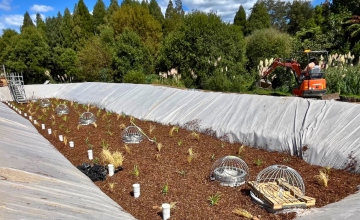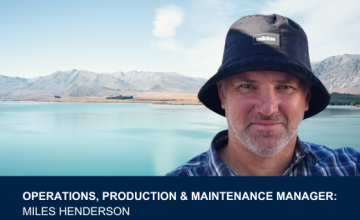Just getting started
1 June 2016
[Q&A]
Tell us about the project you presented at the Young Engineer of the Year finalists’ presentation night.
Through the Whareuku project, we worked collaboratively with local Māori in Te Tai Tokerau (Northland) on a holistic housing method accessible for rural Māori families to build on Māori land. We developed the project with a kaupapa Māori approach; integrating indigenous values by using the Mauri Model decision making framework, developed by Dr Kepa Morgan FIPENZ at the University of Auckland. The local Māori whanau determined the project’s direction and outcomes.
The project provided a precedent for building in rammed earth and for a community-led housing project. We worked closely with the Far North District Council to address the perceived performance risks of a rammed earth house. We obtained two separate structural engineering peer reviews and a further review of the architectural aspects, and conducted a test programme to evaluate the material’s structural properties, before building consent was granted. But by working through these issues with the council, and by developing a set of engineering calculations and architectural drawings for the Whareuku project, we’ve made future rammed earth housing projects more straightforward. Getting the house built was a great achievement.
What’s different about this project?
Using the Mauri Model decision making framework was new. It meant we could bring together a wide range of stakeholders to evaluate competing housing methods against the holistic concept of mauri (life force, wellbeing, sustainability). In this way, we determined the most suitable approach in a fair, respectful and transparent way.
The rammed earth technology is new as well and is constantly being refined. We developed a flax decortication device to assist with rammed earth construction. We modified existing equipment to mix soil and quickly and safely ram the earth panels. The house design incorporated a form similar to a marae. We developed specific wall placement and flashing details to make the earth wall panel construction as simple and efficient as possible.
Why did you become an engineer?
I liked the idea of working in a team environment, creating solutions that benefit society and undertaking projects with physical and tangible outcomes.
What are your goals?
I’m proud to have met one of my goals through the Whareuku project. I aimed to work with a team building a complex and iconic civil project which would benefit society. My new focus is to conduct research and development on stormwater solutions – and see what doors open up after that.
What does the future of engineering look like?
As resources become scarcer and constraints on structural and device performance become more stringent, engineers will be the people with the best skill set to develop and deliver technological innovations to meet these future needs.
Thank you to the Institution of Professional Engineers New Zealand (IPENZ) for letting us republish a version of the article. It was first published in Engineering Insight June/July 2016. Find out more about the Young Engineer of the Year Award [Link: https://www.ipenz.nz/home/awards-and-scholarships/awards/young-engineer-of-the-year

